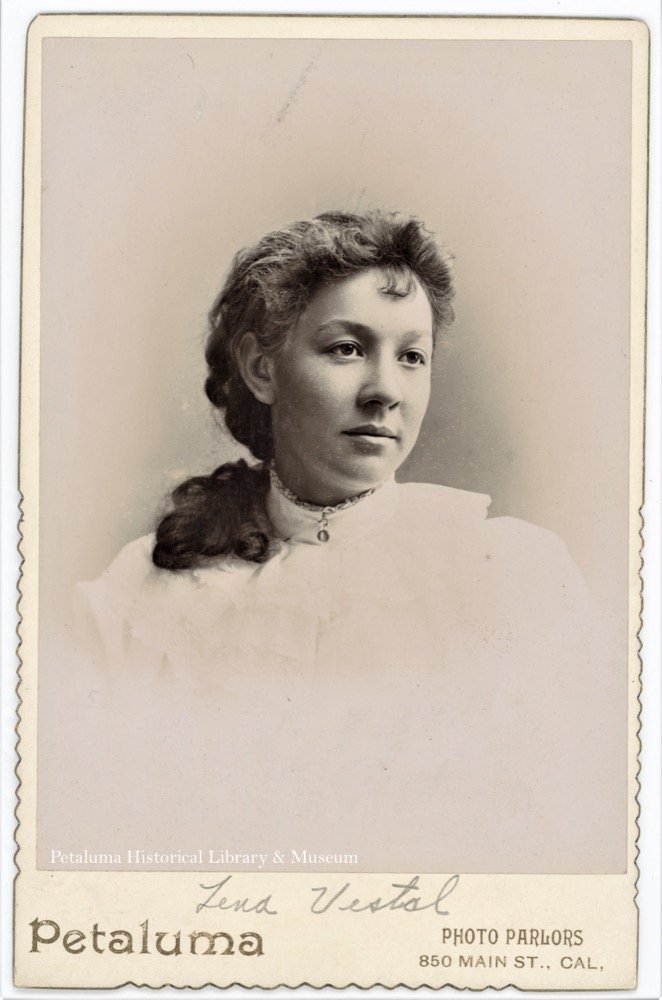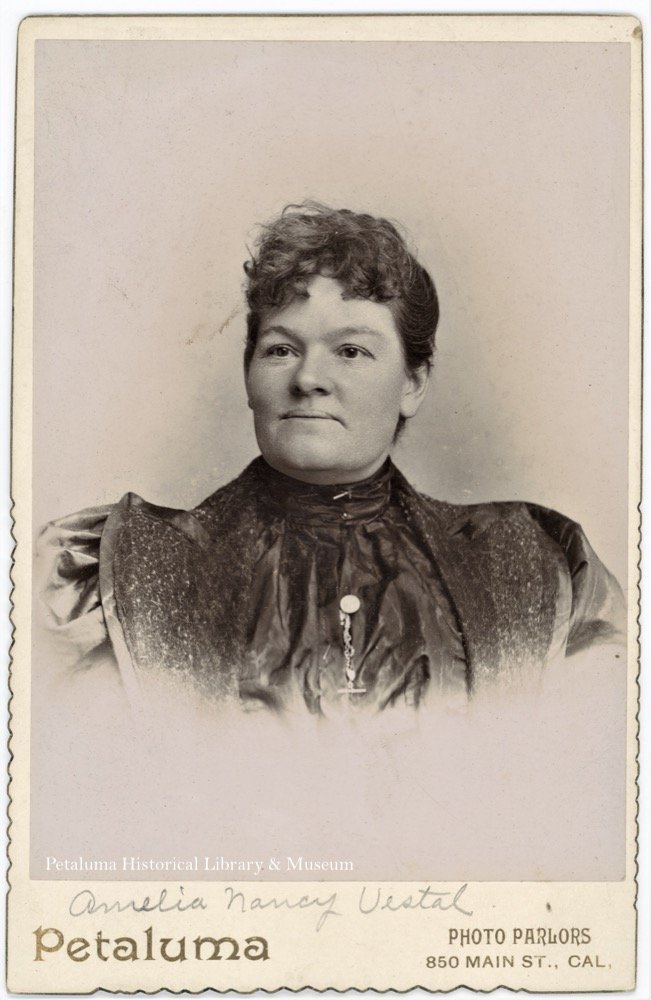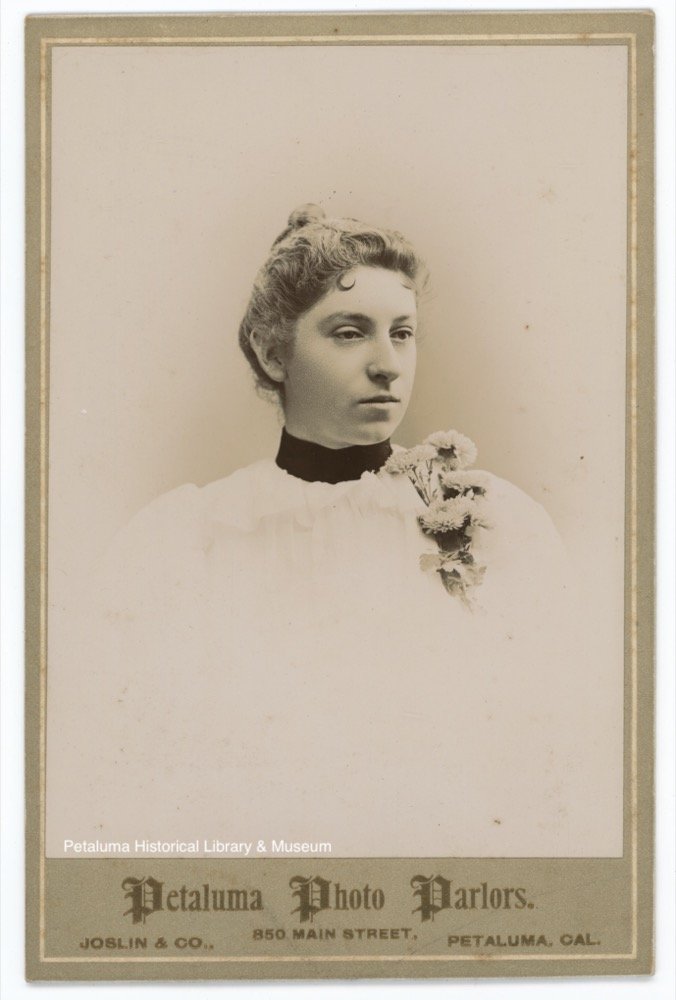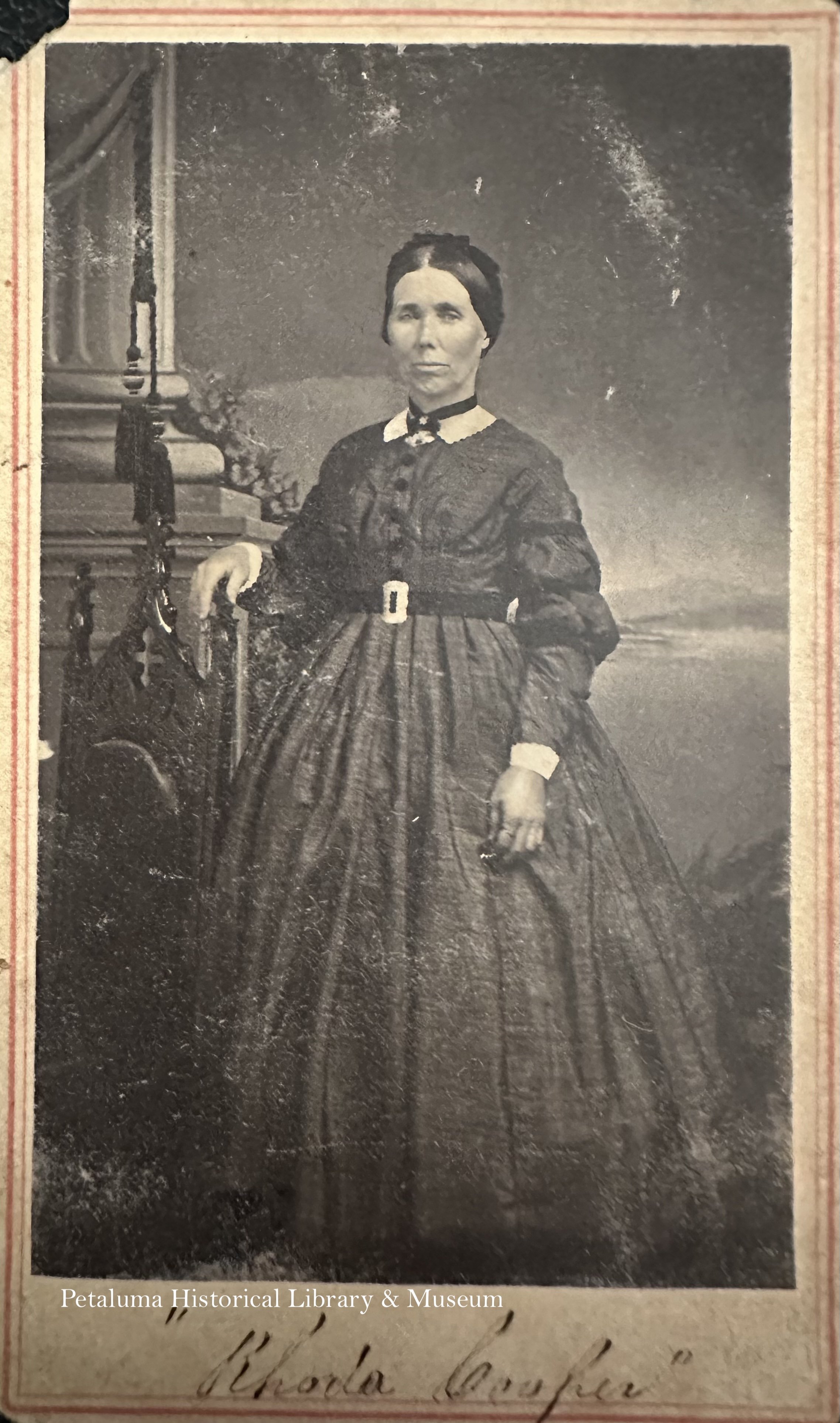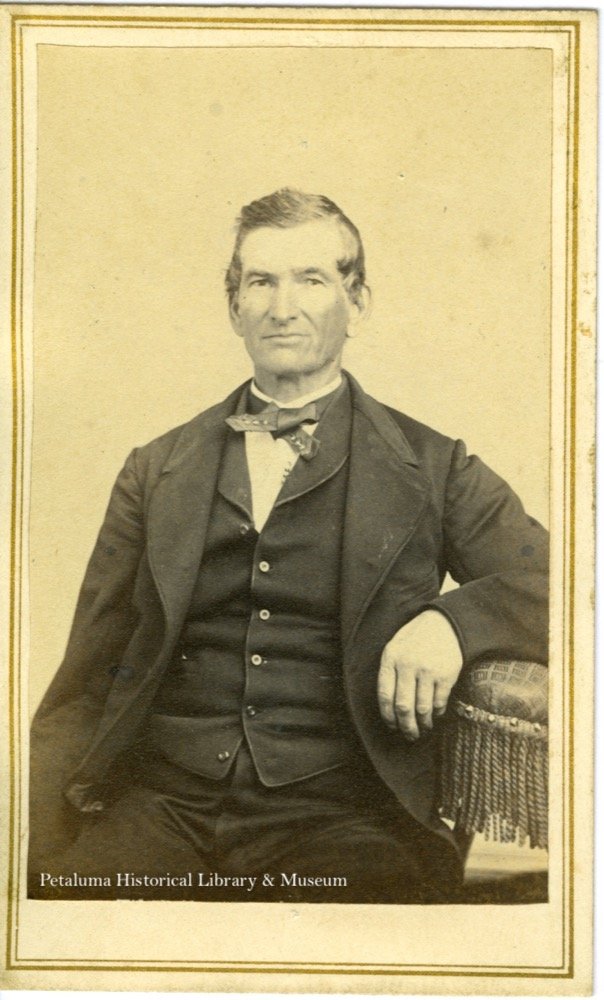JOSLIN & COMPANY was established by the photographer Amon James Tuft Joslin. Under the name of Joslin & Company, he and his assistant(s) operated the photography studio under the name “Petaluma Photo Parlors”. It was located at 850 Main Street opposite the American Hotel.
Active in Petaluma: Joslin opened the Petaluma Photo Parlors in November of 1893, and left the studio, departing Petaluma for Chico, in April 1897.
Biographical Note: Amon James Tuft Joslin was born in 1839 in Rockwood, New York and died in 1913 in San Benito County, California. He is best known for his association with an ambrotype taken of Abraham Lincoln on May 27, 1857 in Danville, Illinois. The portrait remains a subject of controversy. According to the Petaluma Daily Morning Courier, Joslin had worked for John M. Pickett as a photographic assistant in Iowa in the 1860s. This was reported in 1895 when Pickett was working as a photographer in Hollister, California and in October of that year traveled to Petaluma to visit his former employee. Between 1893 and 1897, Joslin spent three and one half eventful years in Petaluma as a photographer. He announced the opening of his studio declaring, “instantaneous exposures”, “views and interior work to order”, and “special attention given to enlarging small pictures in crayon, ink, oils and water colors”. In December 1895 Joslin’s wife was poisoned when she mistook his photographic chemicals for cider. In May 1896 Joslin’s photographic assistant, S. W. Freeze was arrested for stealing Joslin’s photographic equipment. In April 1897, the Petaluma Daily Morning Courier reported that Joslin and his wife enjoyed their years in Petaluma, but decided to transfer to Chico, California where Joslin had already opened a photographic studio. In December 1897 the paper reported that Joslin had written a letter and sent photographs of scenery taken in Lassen County, and that he was soon to start off for the state of Illinois. It is of note that from July 13 through July 22, 1898 the Petaluma Daily Morning Courier ran an advertisement announcing the sale of photographs “below cost” at the “Petaluma Gallery” described as “Joslin’s Old Gallery” located opposite the American Hotel.
Bibliography: Carl Mautz, Biographies of Western Photographers, A Reference Guide to Photographers Working in the 19th Century American West, Expanded and Revised Edition, 2018, p. 141; https://digital.sonomalibrary.org/about/photographers; Petaluma Daily Morning Courier, Nov. 22, 1893, p.7; Dec. 6, 1893, p.1; Oct. 1, 1895, p.4; Dec. 17, 1895, p.1; May 27, 1896, p.1; July 15, 1896, p.5; April 5, 1897 p.1 and 3; Dec. 4, 1897, p.3; July 13, 1898, p.2.
Click on any thumbnail for an enlarged version and additional information.



